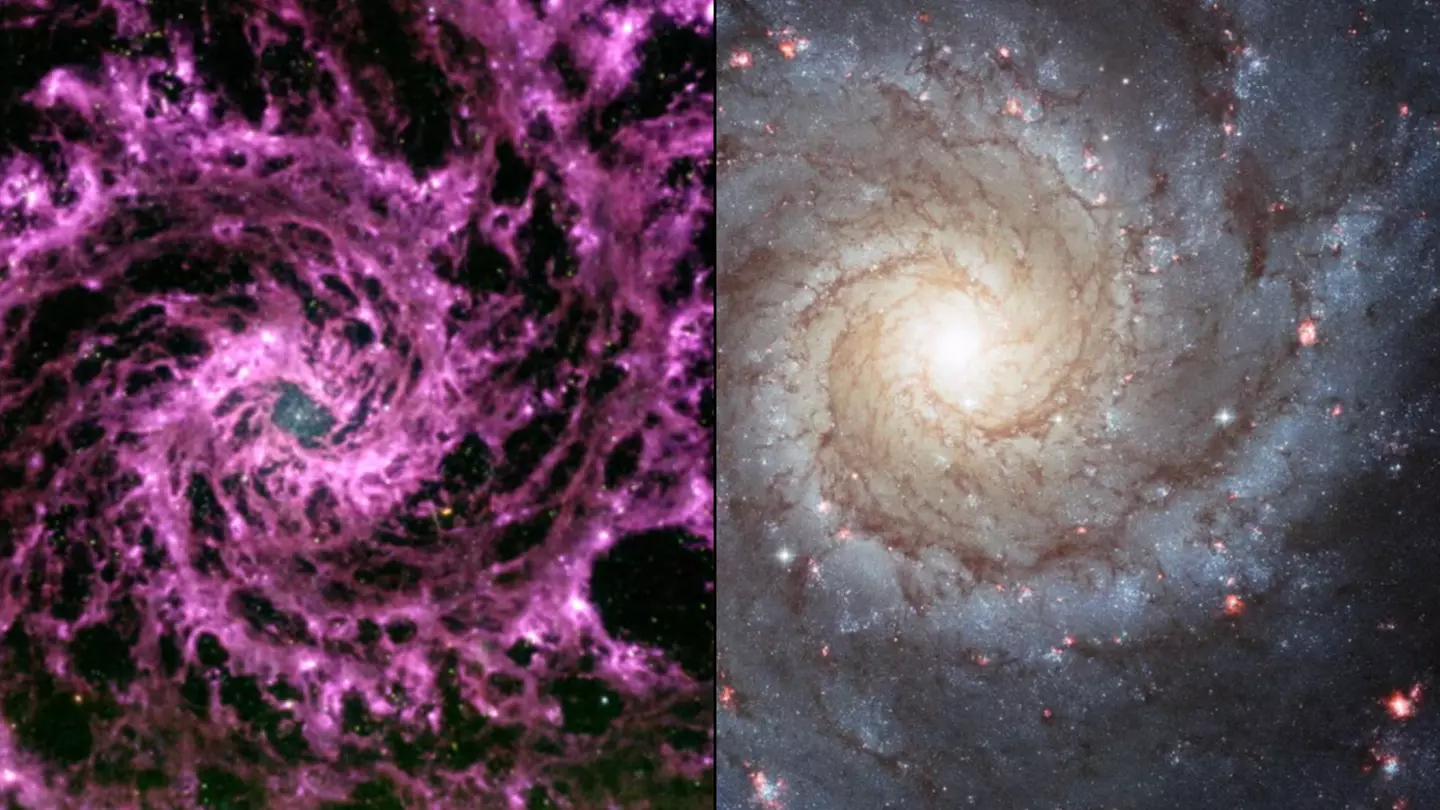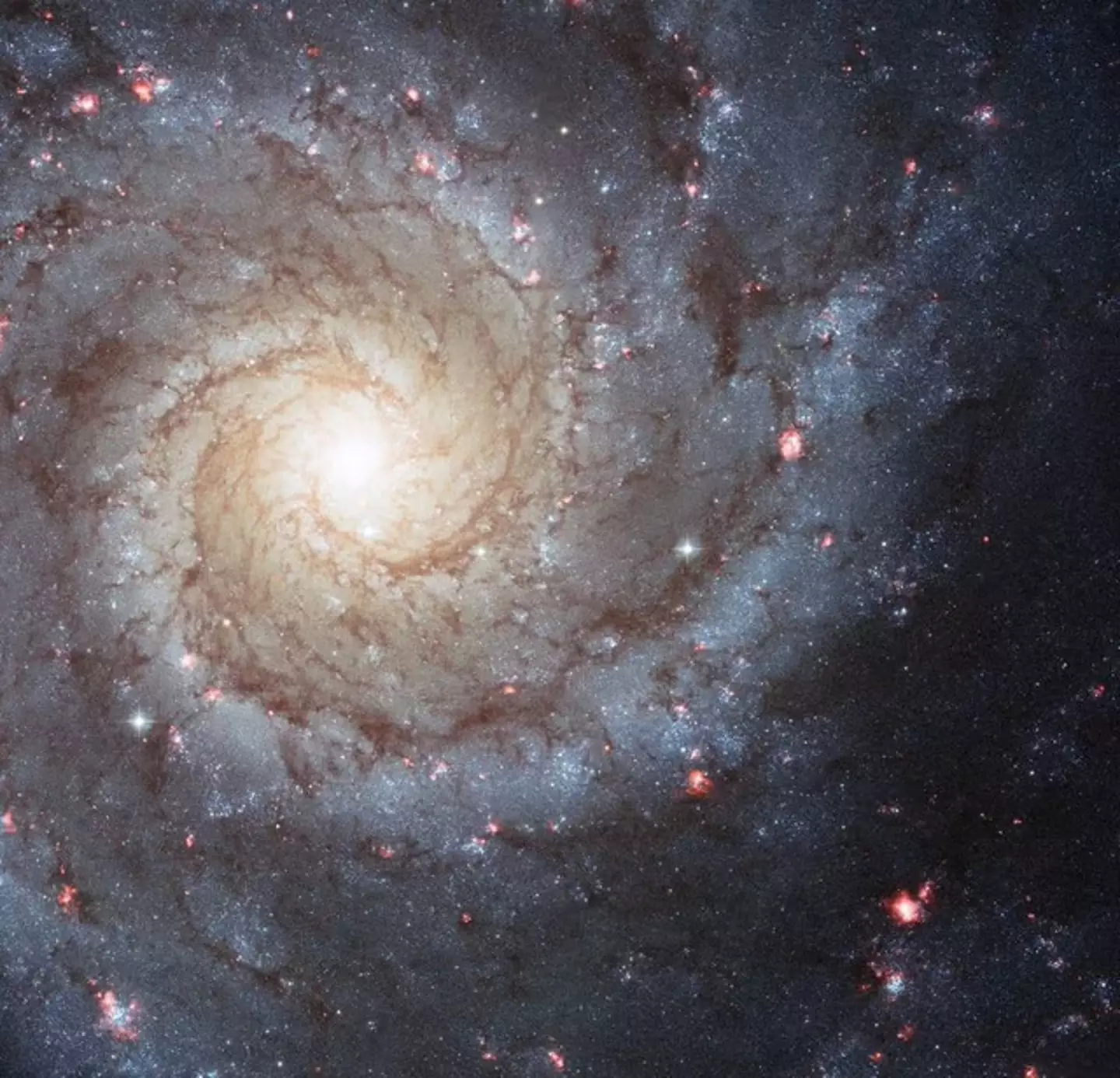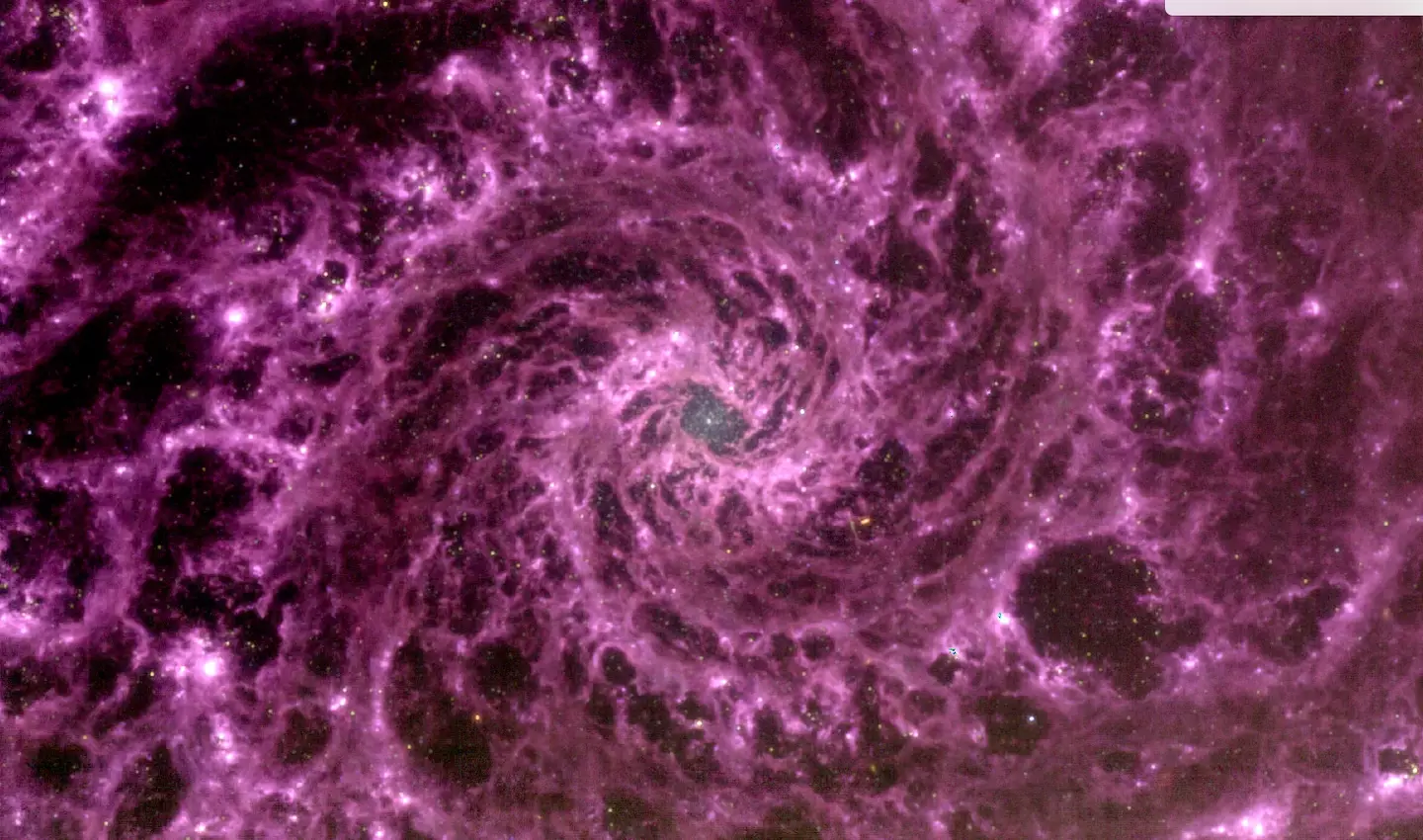
The NASA James Webb telescope once discovered a purple galactic swirl reminiscent of a weird Marvel multiverse portal.
Although Andrew Garfield and Tobey Maguire didn't pop up out of this one, the galaxy visuals are 'what we think our own Milky Way looks like'.
Even though pictures of the distant galaxy have been taken before, the dust lanes and the reddish brown filaments in the spiral arms prevented us from seeing the full picture.
However, thanks to Gabriel Brammer, an astronomer at the Cosmic Dawn Center in the Niels Bohr Institute at the University of Copenhagen, we witnessed the mid-infrared image of the galaxy, known as NGC 628, which looked like something out of a science-fiction film.
Advert
When looking at the raw data, he decided to colour process the image and to share it on social media.

Dr Brammer - who shared an image on X (Twitter) back in 2022 - told The Independent: "This is a galaxy that probably looks a lot like what we think our own Milky Way looks like.
"You can see all these knots of individual stars forming, individual supernovae have gone off and really study that in detail.
"You look at this galaxy with Hubble or with ground based telescopes, you see blue stars, you see red stars, you see spiral arms, you see dust lanes.
Advert
"In the mid-infrared, what you’re actually kind of seeing is the inverse of that, where that dust is no longer absorbing.
"We’re actually observing directly that dust itself that’s now glowing, because the dust itself is emitting.
"We’re actually seeing an image of the gas and the dust in this galaxy, rather than the stars."

He added: "It was really the first thing that popped out.
Advert
“It really just blew me away the second I had it open on my screen.
"We’ve been waiting for Webb for in some cases for decades now and we’ve all been, not sleeping very much for the last week looking and kind of looking at as many different Webb images we can.
"It’s all just truly spectacular."
The James Webb Space Telescope (JWST) was launched on Christmas Day in 2021, sent into space to outperform the long-standing Hubble Telescope and capture crystal-clear images of newly-discovered stars, planets, galaxies, and more.
The $10 billion telescope has captured some impressive photos of Uranus since its launch.
Topics: NASA, Science, Space, Technology, James Webb Space Telescope